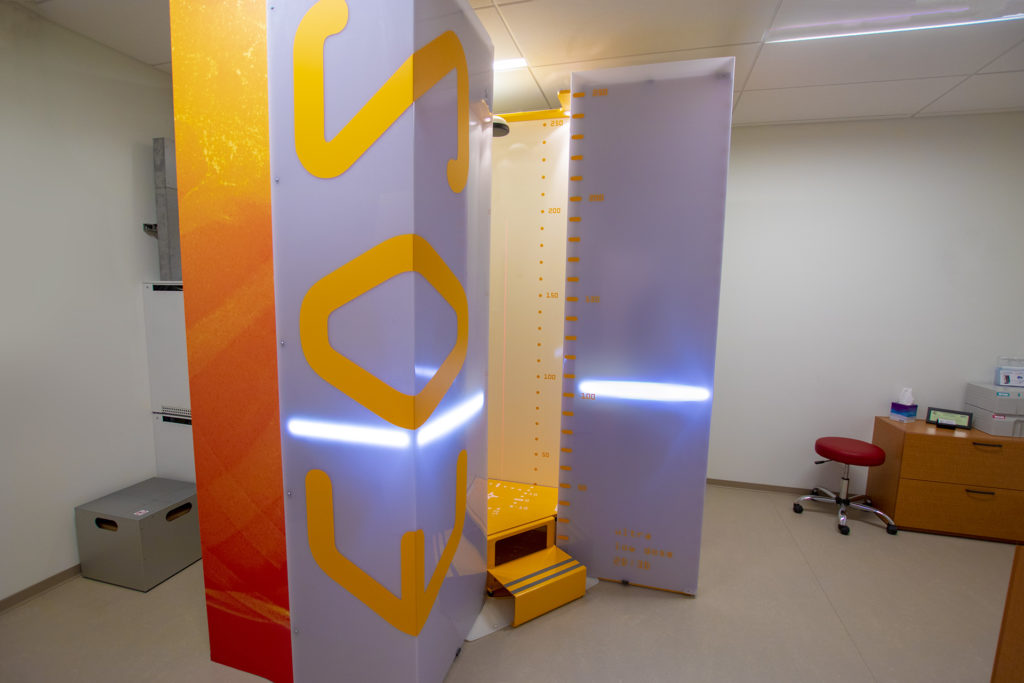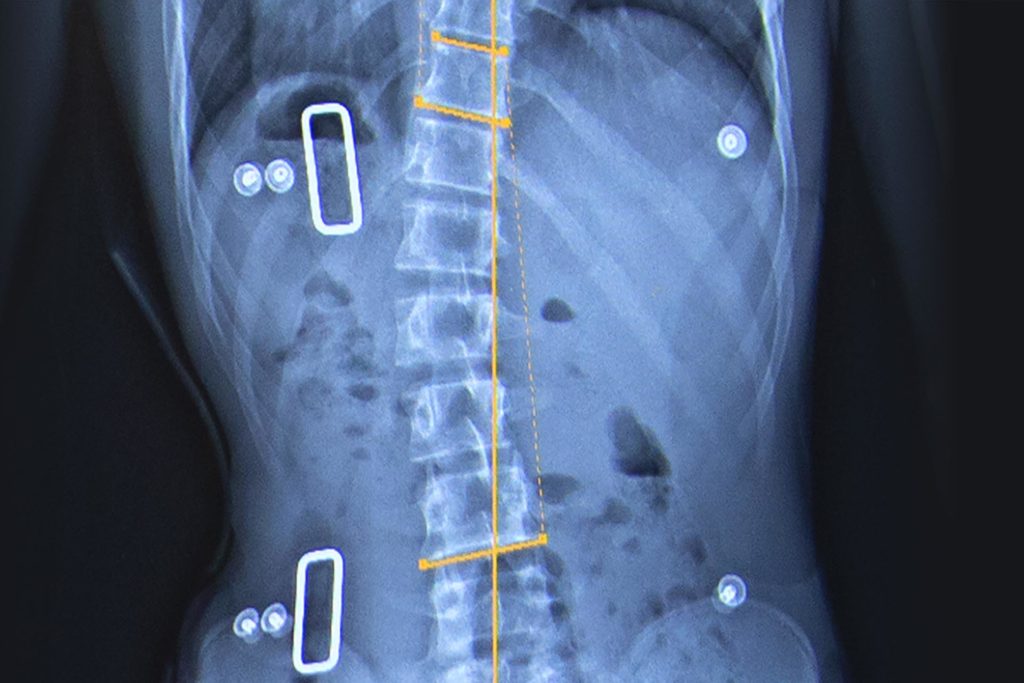We have an EOS in our Fairfax, Virginia office — this Nobel Prize-winning technology is not limited to just our scoliosis patients, but is available to anyone interested in low-dose radiation digital X-rays. In fact, many orthopedists send their non-scoliosis patients to our offices because EOS offers a unique combination of low-dose and bi-planar X-ray capabilities.

EOS® imaging uses ultra-low dose radiation to produce very detailed, high-quality images. With EOS®, we can have a full view of the patient’s skeleton: life-size, naturally weight-bearing, from all angles. This natural, non-segmented view of the patient allows your practitioner the best possible view to make more informed diagnoses and treatment plans, especially for skeletal disorders.

The EOS machine can be used to diagnose many different orthopedic conditions. With scoliosis patients, there is a large number of X-rays required to monitor curve changes and correction obtained by each new brace. This increase in required radiology scans makes the EOS even more important to our scoliosis patients because of its ability to provide a quality, single image with much lower radiation exposure than a traditional X-ray and nullifying the need to “stitch” together images of the spine.